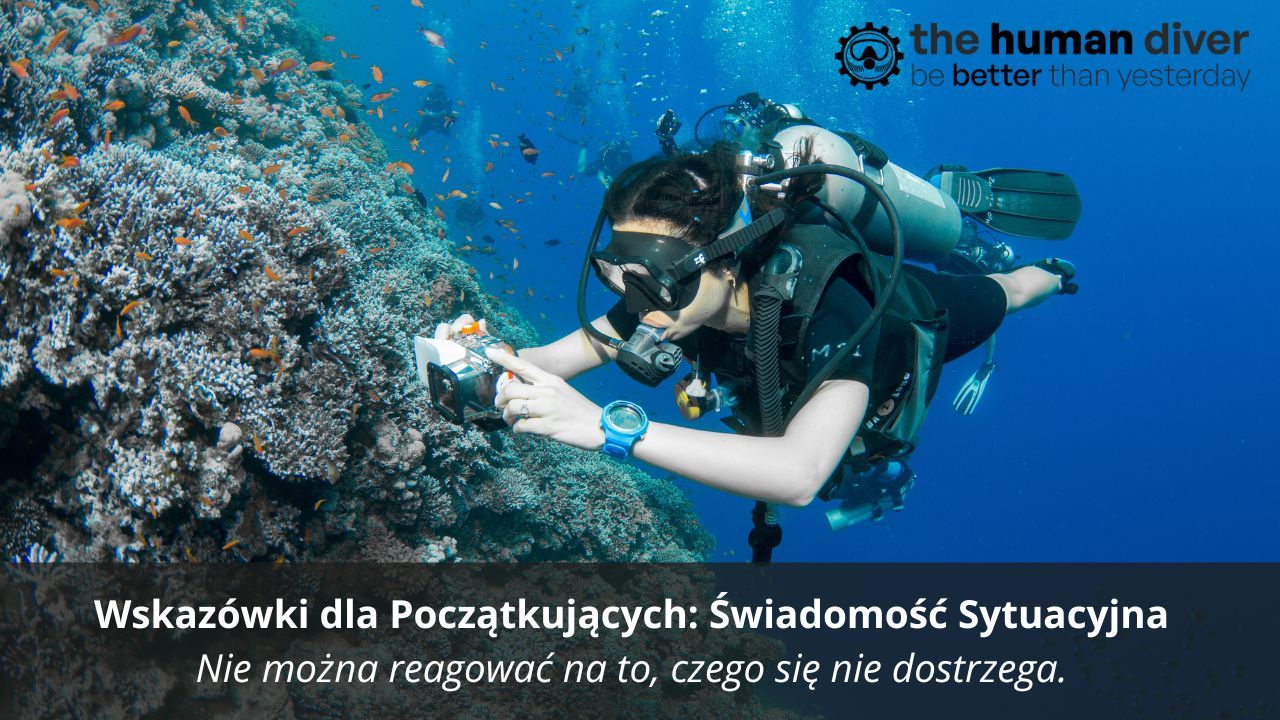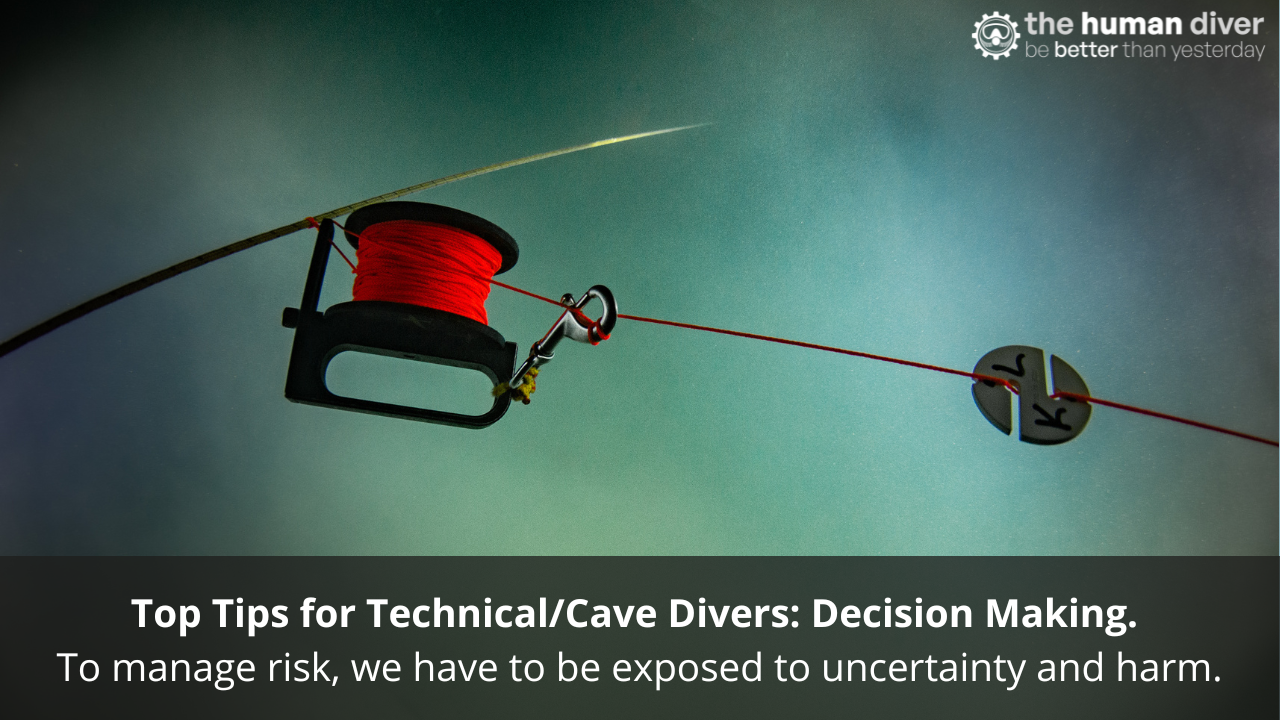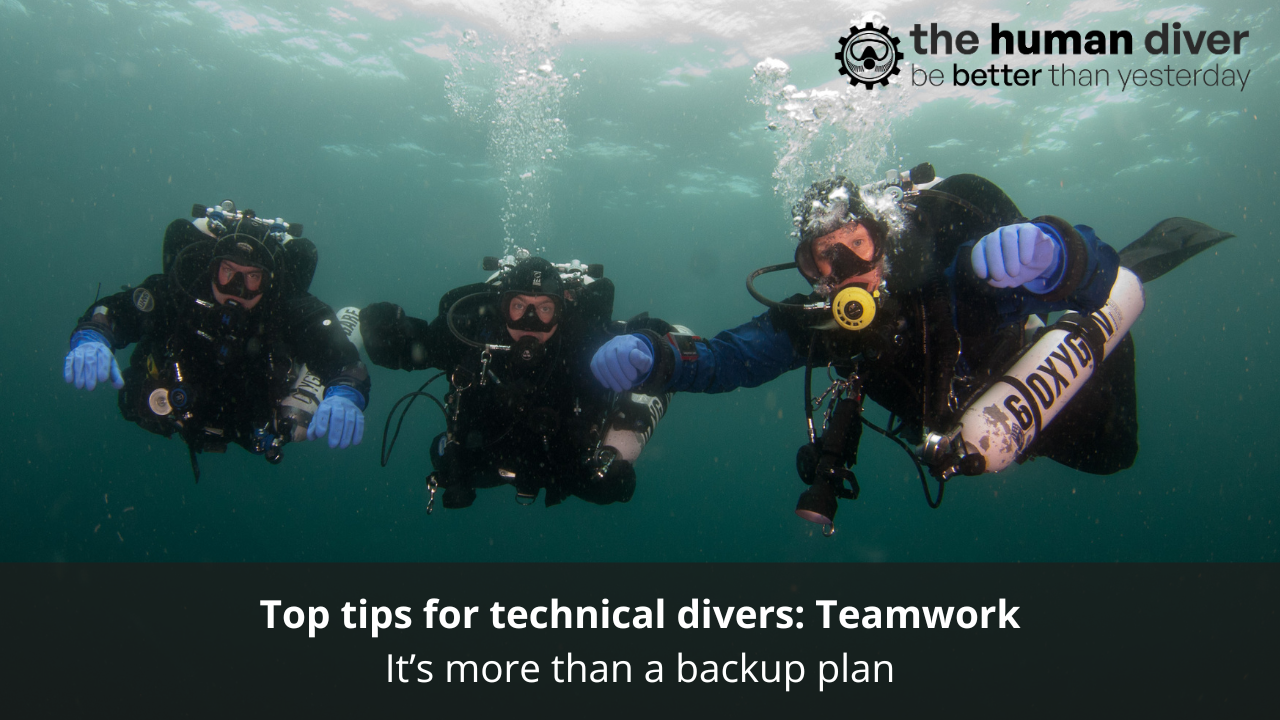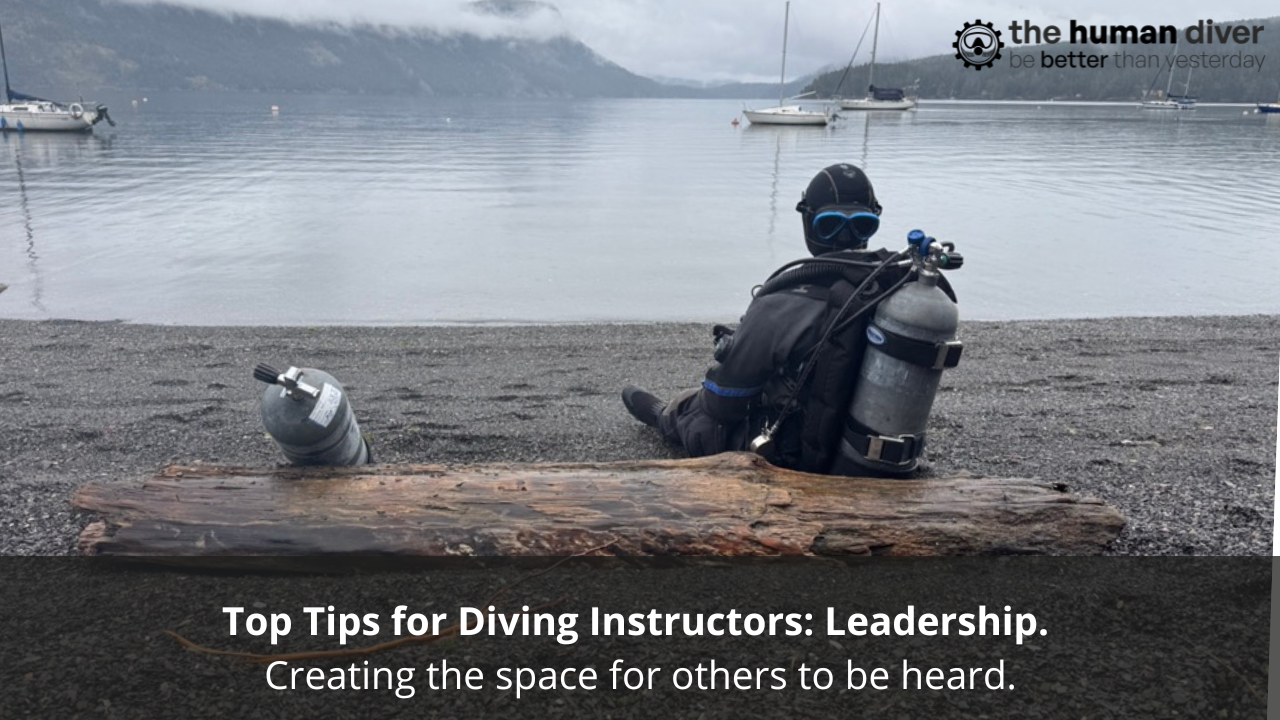
Speaking up to prevent an adverse event - looking back to learn
Jun 18, 2023I spend a fair amount of my time talking about psychological safety and a Just Culture, and while they both can help teams and organisations learn and improve, in my opinion, they are subtlety different but interdependent. This blog will explain what each of the terms means and how they fit into your learning and improving as part of a team, dive centre or organisation.
But before we do that, let’s consider the following scenario.
A diver is undertaking some training with an instructor. They have paid for the course and are keen to learn. They get into the classroom, and the instructor makes some introductions and talks about their background. They talk about a near-miss that they have had in the past and why learning these new skills are important. The student asks an ‘obvious’ question to some of the others in the class about why something is done a certain way, and the instructor encourages the discussion and helps the student discover the answer. The student is learning. The class moves from the dive centre to the dive boat. The student in question asks another ‘obvious’ question to the captain of the boat who makes some sarcastic remark in return and provides a curt response. The student feels ashamed for asking this important, to them, question. The student sits down and starts to get their equipment ready and has another question about their equipment configuration but holds back because of the previous response. They ‘think it will be okay’ and carries on getting ready. As they enter the water, they lose control of their buoyancy and sink to the bottom at 15m. The instructor recovers them to the surface, and then onto the boat. The instructor is supportive, wanting to understand if they are okay and to understand how the situation developed. The captain is concerned, but more about how this might look to others because of the ‘stupidity’ of the student in the class, and that the student missed a critical step in preparing their equipment. He is continually frustrated at the lack of skills in modern divers.
I have purposely kept the story generic because there is a tendency to pick holes in the story if I don’t get it exactly right, and so learning stops. The story might sound common to many of you, and I am sure these sorts of events happen many times a day around the world each day, and fortunately, they don’t end as tragic outcomes, but they could. (See last week’s blog about near misses).
The narrative has been constructed to show different perspectives and how psychological safety and a Just Culture can be applied to create learning. 
Psychological Safety
This has been defined as the shared belief within the team that it is okay to take an interpersonal risk by Professor Amy Edmondson without fear of retribution, shame, or guilt. In effect, it is the shared value of trust within the team, not just 1:1 but 1:many and many:1. Dr Timothy Clark goes further and says that it is made up of four stages:
- Inclusion Safety. The feeling of inclusion with a team, a sense of belonging. In this case, it is about being in a diver training environment, where everyone is there to learn something – the students are learning from the instructor, and the instructor is learning from the students.
- Learner Safety. Learning comes from pushing boundaries, making mistakes, and learning from them. This is the feeling that it is okay to make mistakes, to fail, to reflect and to improve. Clark’s research showed that people will look for learner safety before pushing their limits, and this aligns with Edmondson’s ‘interpersonal risk’.
- Contributor Safety. This is where the team members feel that they can contribute to the situation, and the team expects them to contribute their knowledge.
- Challenger Safety. This is the often-spoken ‘speak up culture’ where those in the team feel that they can speak up and challenge the status quo. The leader, in this case, the instructor, is the one who creates that environment. In diving instruction, there is always a fine line between having a ‘know it all’ who wants to tell you everything they know, and someone who is genuinely curious.
Psychological safety has been shown to be the key trait of a learning-focused team because they are happy to make mistakes and learn from them. Every event is a learning opportunity.

Just Culture
This is based on the concept that we can improve as an organisation if we are able to find out how adverse or unwanted events happened. Consequently, there is a recognition that everyone makes mistakes, irrespective of experience and knowledge, but that there are some behaviours that are not acceptable e.g., sabotage or wilful negligence, and a Just Culture can help unearth the factors that led to the event. The European Aviation domain has put Just Culture into regulation, as stated below.

A Just Culture is primarily there to help organisations learn and improve. Some organisations have a Just Culture policy and use a framework to help determine culpability (was it an organisational failure or an individual failure) and this had led to the process being weaponised and individuals being ‘Just Cultured’!
A Just Culture requires difficult conversations to be had – to understand how the adaptations and deviations from standards developed in the manner they did. These adaptations might be contrary to the organisation’s standards and might be due to a lack of time, money, direction, instructions, and clarity of goals and priorities. Because these can be difficult conversations, psychological safety is needed to support the conversations – “a shared belief it is safe to take an interpersonal risk”.
In my opinion, psychological safety is a proactive or prospective construct that allows the conditions surrounding adverse events to be discussed prior to the event, where concerns or issues can be raised, and, hopefully, the trajectory of failure is changed. This is different to a Just Culture which is required after an adverse event has occurred, and now we are looking back at the event, our vision clouded by hindsight and outcome biases, along with the fundamental attribution bias.
Reflection and Review
We are now going to take the scenario apart and look at each of the statements through the lens of psychological safety and a Just Culture.
A diver is undertaking some training with an instructor. They have paid for the course and are keen to learn. – Authority gradient and an expected/inferred level of trust.
They get into the classroom, and the instructor makes some introductions and talks about their background. They talk about a near-miss that they have had in the past and how they physically and cognitively failed, and why learning these new skills is important. – The instructor is building psychological safety by being vulnerable. Even though the instructor is supposed to know a fair amount, they still make mistakes.
The student asks an ‘obvious’ question to some of the others in the class about why something is done a certain way, and the instructor encourages the discussion and helps the student discover the answer. The student is learning. – By encouraging contribution and challenges, and then rewarding it, the instructor is again building psychological safety.
The class moves from the dive centre to the dive boat. The student in question asks another ‘obvious’ question to the captain of the boat who makes some sarcastic remark in return and provides a curt response. The student feels ashamed for asking this important, to them, question. The student sits down and starts to get their equipment ready and has another question about their equipment configuration but holds back because of the previous response. – The response from the Captain triggers a painful emotional response, which then leads to a defensive position by the student.
They ‘think it will be okay’ and carries on getting ready. – This is a normal human response. “I will just have to deal with it. I’ve sunk costs into the course, and if things are really bad, I have an instructor who can help me.”
As they enter the water, they lose control of their buoyancy and sink to the bottom at 15m. The instructor recovers them to the surface, and then onto the boat. The instructor is supportive, wanting to understand if they are okay, and to understand how the situation developed. – Restorative Just Culture is about understanding the harm that has been caused, and whose responsibility it is to address this. To first do that, we have to understand how the situation developed in the manner it did. Not applying hindsight bias, or judging, but rather being curious. This is why ‘How did it make sense’ is better than ‘Why did it happen?’ as the latter infers a judgement and someone has to justify their position.
The captain is concerned, but more about how this might look to others because of the ‘stupidity’ of the student in the class, and that the student missed a critical step in preparing their equipment. He is continually frustrated at the lack of skills in modern divers. – A defensive approach is normal in an organisational setting but this defensiveness should be explored.

If we look at the event described above, we can see where psychological safety has been created by the instructor in the class by encouraging challenges from the floor, and how it has been destroyed by the captain when he gives a sarcastic response. Exploring the event and how it developed for the student and instructor would be supported by a Just Culture, and the learning would also explore why the captain behaved in the manner they did. Does the captain know about their influence as a leader and creator/destroyer of psychological safety? What else is going on at the time with the captain (explore situational factors, not just dispositional factors – see Fundamental Attribution Error)? Is there a known problem with the training system? If so, why isn’t it being addressed? What are the system factors that prevent improvement? What was the equipment issue that needed to be resolved? How could it have been spotted beforehand more easily, especially for a novice/student on the class?
Both psychological safety and a Just Culture support the need to look up and out, not down and in. The latter is easy because we can just say “The student should have spoken up and then it would have been okay.” and “The instructor should have been paying more attention to the student.” These are counterfactuals that don’t explore the conditions which made it hard to speak up or to ‘pay more attention’.
Summary
Psychological safety and a Just Culture can be dismissed as weaknesses in divers, leading to excuses for ‘obvious’ mistakes that were made, but they are both essential for learning: psychological safety as a prospective/proactive condition that allows issues to be identified BEFORE something goes wrong, and Just Culture which is retrospective, looking backwards AFTER an event and determining how we can learn from it. Note, a Just Culture requires psychological safety to be effective. It also requires a good understanding of how human error manifests itself, and the role that conditions have in shaping and influencing our behaviour in a dynamic situation.
Resources:
Psychological Safety Toolkits from Tom Geraghty.
Just Culture and Psychological Safety - Explainer Video
Previous Blogs on #psychologicalsafety and #justculture

Gareth Lock is the owner of The Human Diver, a niche company focused on educating and developing divers, instructors and related teams to be high-performing. If you'd like to deepen your diving experience, consider taking the online introduction course which will change your attitude towards diving because safety is your perception, visit the website
Want to learn more about this article or have questions? Contact us.











